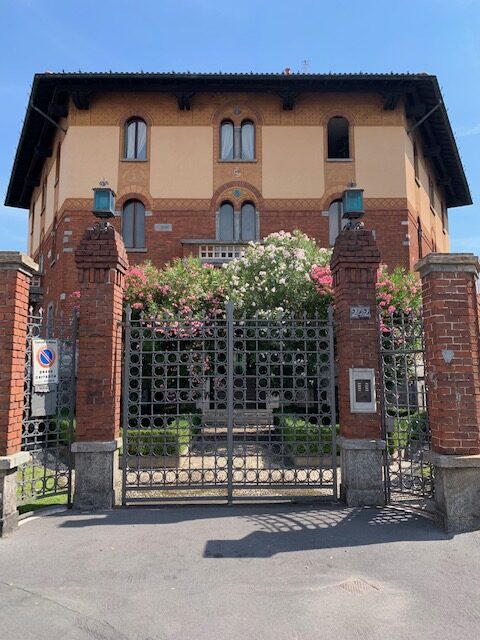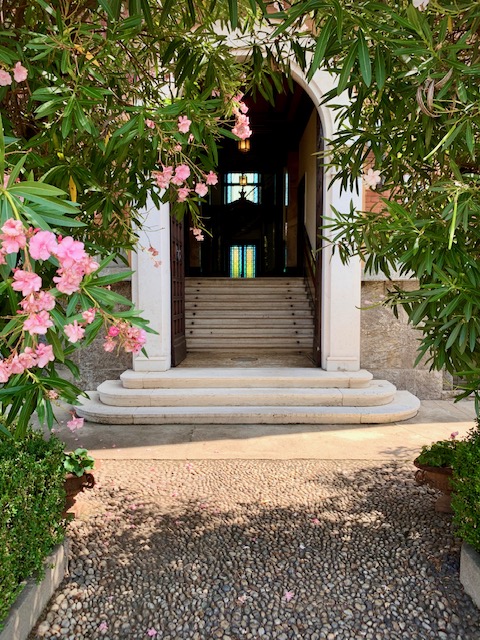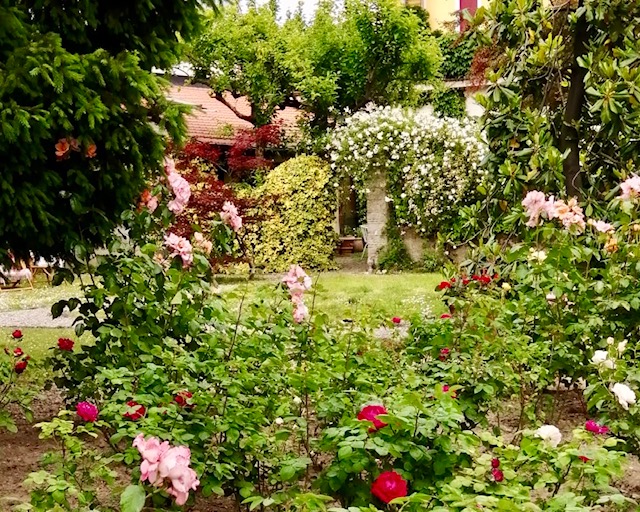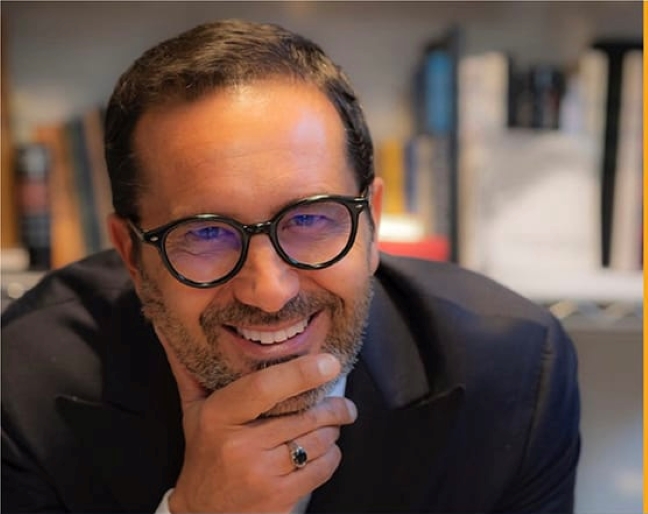The TSL Gazette – Marco Poli
For the first time, we at Canclini will be interviewing Marco Poli, founder of The Style Lift and the Gazette, by reversing sides.
Welcome Marco and Sara to our style department. Marco tell us a little about yourself….
Thank you for inviting me! My name is Marco Poli, I founded The Style Lift archive four years ago: a historical collection of clothing fabrics, with also some for furnishings, from the 1960s to the present day. This archive is implemented from season to season and is visited by fashion designers looking for inspiration; obviously the most important textile companies have their own beautiful and well-kept historical archives inside, as do you! But here you can find all kinds of fabrics: from those with natural fibers such as wool, cotton, linen … to those man-made, with an increasing number of fabrics that are a result of recycling: sustainability is what the market is looking for today.
We know, however, that you also own a newspaper: The Gazette
Yes exactly: to connect the archive with other side of the table, e.g. style offices, designers, I thought a newspaper would have been ideal, so I founded the TSL Gazette, which is precisely “the Gazette” of the archive.
Inside the newspaper we don’t just talk about gossip and actuality but, compared to the other B2B newspapers, we also write a bit about lifestyle, e.g. about the people who animates this world, architects, designers, artists, I believe that the textile entrepreneurs or stylists who reads our newspaper are themselves end consumers and therefore want to read news that covers a broader range and that can help them in their creative work.
The Gazette is, in our opinion, very intriguing and innovative
Yes, we have created a personality of our own with this newspaper, one that does not overlap with other major trade papers and we are well recognized.
Format and type of paper is another distinction from others: a very precious paper that is certified sustainable, so we try to be consistent with the world even in the physical expression of this newspaper!
We also write a fortnightly newsletter that touches topics and events happened during a timeframe of 15-days, of course those we think are interesting for the most.
We find the idea of “the-man-in-the-lift” brilliant!!!
Thank you! This “lift-boy” is actually a “driver” for our visitors because we wanted to make the idea clear to our readers that we have a kind of “virtual/imaginary hotel”, where each floor has a textile subject: wool, silk, linen, cotton and that little man accompanies you through the floors or into individual and much more focused rooms.
On the cotton floor, for example, you can find the shirting room, with two wardrobes, one for men and one for women, split then again in seasons.
This expedites the research, so if one wants to understand first how the archive is organized before coming to visit us, the “man-in-the-lift” helps taking you immediately where you want to be.

You work with a lot of partners: how do you choose them?
Let’s say we choose each other, we target those companies that represent a lead for the market but we also like to do a bit of scouting.
We like to understand and give attention to not only ‘same building companies’, an expression to indicate those considered very important, but also those emerging and innovative.
For example, with a company like yours, Canclini, we have the opportunity to see a range of proposals that is not only very wide, but also authoritative, tested, high-end, exactly what we want to find in our partners.

You always have a thousand ideas, you are very eclectic…how do you do it?
By showing the magazine at trade fairs and fashion shows, some people look for us and that’s where new ideas are born for the most.
For some time now, for example, we have also opened up to shoots where the fabric is worn; the fabric is usually photographed still life. We try to bring emotions, feelings, because we work with people like you: sensitive with a bit of taste, who want to be excited, amazed.
Therefore, we start ‘backwards’: with a part of top creativity and then, if appropriate, we also talk about markets and finance.
You are lucky to have a special location, tell us a bit about the Villa…
Yes, we are lucky to live and be based in a such a special location.
This is the house that my mum’s family built in the early 1900s; this used to be the residence of the owners of a distillery specialized in liqueurs, such as “Fernet”, or even drinks such as “Cedrata”, a citron drink. There were the stills, where the aromas, flavors, the cedar and orange peels were mixed… so it is a place where creativity has always been part of.
Unfortunately, I’ve never seen it in operation but we still keep some demijohns and stills that are a testimony of the past.
Back then it was actually a country house but then eventually, with cities getting bigger and bigger, it got incorporated into the city, in fact we are now on the north suburbs of Milan, 10 minutes away from the center.
You do a lot of work during the trade fairs: what do you think about new formats, attendance, and how they should evolve?
As far as trade fairs are concerned, this is a very important and interesting chapter. Some people say that trade fairs are no longer needed, but in my opinion, they are very useful!
They also represent a moment of inspiration, comparison, as well as convenience for buyers of having a single place where they can meet all the companies in once.
Allow me to make a suggestion: shows should be less a place of presence and trade and more places of inspiration.
For example, Milano Unica! I would further amplify the mood tables… I imagine a place where I can get in, immerse myself in short videos, with inspiring sounds and colors, with evocative images next to the fabrics. I would like the trend areas to also be a learning place.
I understand that’s demanding and costly, but perhaps with a bit of more empathy with the visitors it could be a plus.
Then I think that, regarding Milano Unica, there is a very effective roadmap: you have the possibility of travelling around the world and it becomes an event for travelers that then can take this message of excellence abroad.

You have a very rich and beautiful textile archive but which fabrics do you love the most?
I have to say that the fabrics I love for the most are, because of my personal history and also because of my nature, men’s fabrics. From the “Biellese” drapery of English taste to shirting fabrics.
Excellent! So, about our fabrics, what do you like?
About your fabrics I really like the fact that I always find unexpected proposals! Also the way you present your collections: I find that your books are very rational and an helpful guide for customers. And then I like the fact that they are products, i.e. when you touch them you feel that you have the core of textile skills in your hand! Then there is the almost infinite range of proposals you have: from the white shirt to the stripes, patterns and motives, the prints, the creative expressions of multicolor madras or tartans…
Moreover, I believe that one finds a coherent and interconnected collection from you, interchangeable for both men and women.
So what really strikes me is your ability to synthesize, but also your predisposition to create exclusivity: this “elevate” you from others and allows you to satisfy everyone.
In the digital age, you always pursue the path of the sensorial, the papery, the physical: why is that? By the way, we love very much fact that you have to touch textiles!
Yes, I pursue the path of sensorially, of paper. You, fabric lovers, know that if you take away the touch you lose 80 per cent of the effectiveness and the same thing happens to the newspaper.
Our newspaper is an object that accompanies you in your reading, but you can also take it back because it is there! You find it on desks, you keep it in bookshops, you don’t throw it away.
And even if it’s a bit bulky in dimensions, you can carry it under your arm and it’s also cool in my opinion! I am also very physical myself… when I started working and I went to Biella, I was 23, the entrepreneurs I met would greet me, shake my hand and then touch me! At first I was embarrassed, but then I realized that they were really attracted by the fabric, by my jacket… and I became like that too; I do like touching to understand and I transferred this to paper.
Digital is complementary and shame if it wasn’t there because with digital you can reach an endless number of interlocutors, but that’s a digital approach, which is fast information, and then there is an in-depth paper approach which is more sensorial.
CASUAL MOMENT: when can we meet next time for a coffee with a good chocolate? In your dependence or in our back yard?
I love chocolate!! Well, we can meet next time in my back yard! It would be nice maybe once to organize an India-themed tea. Let’s make Indian teas with spice biscuits while you present your new summer collection with these renewed “solaro” fabrics.
That could be nice, like when we launched your Per Lei collection and you came to do the shooting in my dependence.


